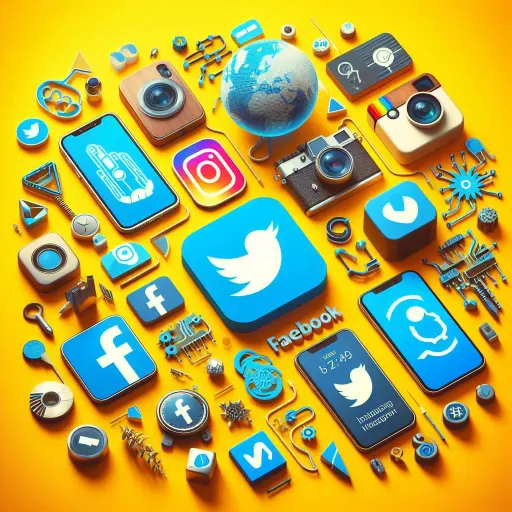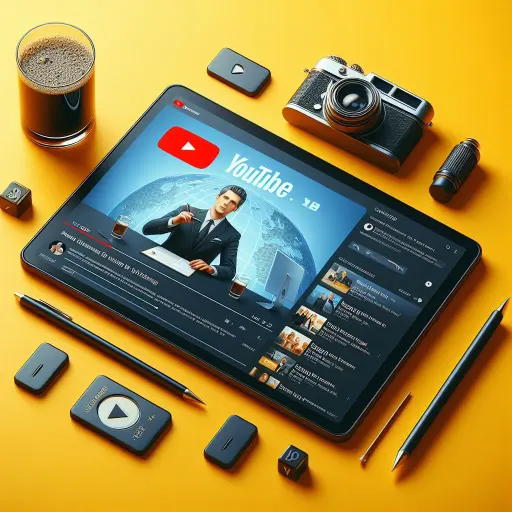
Which social media platform is best for business in 2024?: The question that keeps every business owner up at night.
It feels like drowning in a sea of social media, Facebook, Instagram, Twitter and LinkedIn – they all seem to be signalling you to join them. But as a business owner, you can’t afford to be everywhere at once.
To save you time and effort, Flora Fountain collected data on the most popular social media networks for businesses in 2024. While some of them might seem recognisable, others might not. Find out which social media platforms could be best for marketing your company. Furthermore, remember that having a strong brand does not require you to be active on every social networking platform.
- Factors To Consider Before Choosing A Social Media Platform
- Telegram
- YouTube
- Conclusion
- Frequently Asked Questions
Factors To Consider Before Choosing A Social Media Platform
Let’s face it, there’s no one-size-fits-all answer. The best social media platform for business depends on a few key factors:
Your target audience
Who are you trying to reach? Young professionals? Fashionistas? Foodies? If your target audience consists mainly of young professionals, platforms like LinkedIn or Instagram might be effective. LinkedIn is known for professional networking, while Instagram is popular among younger demographics for its visual appeal. Understanding your target audience’s social media habits is crucial. A professional digital marketing company in Ahmedabad can help you define your target audience more precisely for your business.
Your business goals
Are you aiming to generate leads, boost brand awareness, or drive sales? If lead generation is a primary goal, platforms like Facebook and LinkedIn are potent tools. They offer targeted advertising options and provide a space for more detailed content that can capture potential leads’ attention For brand awareness, platforms like Instagram and Twitter excel. The visual nature of Instagram, coupled with Twitter’s real-time updates, helps keep your brand in the spotlight.
Your resources
Let’s be honest, time and money cannot be revived easily. Be realistic about the resources you can dedicate to social media management. Consider the time you or your team can realistically dedicate to social media management. Platforms like Twitter require more frequent updates, while platforms like LinkedIn may have a slower posting cadence.
Now, let’s dive into the big social media platforms: Facebook, Instagram, Twitter, Telegram, YouTube and LinkedIn.

When Facebook was introduced in 2006, it was like a new toy that everyone wanted. Today, although it may not be the shiny new toy on the block, Facebook still boasts a massive user base of 3.03 billion. It remains a great platform for:
- Building brand awareness: Reach a wide audience with targeted advertising and organic content.
- Community building: Create groups and foster interaction with your customers.
- Driving traffic to your website: Share blog posts, product launches, and special offers.
Pros
- Versatile content options: Share photos, videos, text, live streams and even host groups for in-depth discussions.
- Targeted advertising: Reach your ideal customer with laser precision using Facebook Ads.
Cons
- Declining organic reach: Facebook can feel a bit cluttered these days. Organic reach (how many people see your posts without paying) has declined, so you might need to invest in some social media advertising.
- Cluttered newsfeed: Competition for attention is fierce, and your posts might get lost in the shuffle.
- Privacy concerns: Data breaches and privacy issues can make some users wary of Facebook.
Instagram is your playground if your business is visually appealing (think fashion, food, travel). With its focus on photos and short videos (called Reels), it’s a fantastic platform for:
- Showcasing your products: High-quality photos and creative Reels can grab attention and drive sales.
- Influencer marketing: It has been gaining popularity for some time now. Businesses collaborate with local influencers to connect and establish a presence in the hearts of communities. However, finding the right influencers can be a daunting task. With numerous options available, selecting one that aligns with your business and goals demands careful planning. For instance, if your business is in Rajkot, a digital marketing agency in Rajkot can assist you throughout the process – from discovering suitable influencers to successful collaboration.
- Building a brand aesthetic: Develop a consistent visual style that reflects your brand personality.
Pros
- Strong engagement: High levels of interaction with content, especially through features like Stories and Reels. The platform offers numerous ways to interact with your audience and develop a devoted following, including posts, and Instagram live.
- Shoppable posts: Sell products directly through Instagram shop, making it a powerful sales tool for e-commerce businesses.
Cons
- Fast-paced environment: Instagram is a fast-paced platform. Keeping up with the latest trends and churning out engaging content can be time-consuming
Think of LinkedIn as an online networking event for professionals. It’s ideal for businesses that target:
- B2B audiences: Connect with other businesses, potential partners, and industry influencers.
- Sharing thought leadership content: Publish articles and insights to establish yourself as an expert.
Pros
- Recruitment tool: Showcase your company culture and attract top talent for open positions.
- Networking opportunities: Connect with other professionals and participate in industry discussions.
Cons
- Limited reach for non-professionals: While B2B businesses excel here, reaching a broader consumer audience might be difficult.
- Less interactive: Engagement on LinkedIn tends to be more formal than other platforms.
Twitter is all about quick updates, breaking news and real-time conversations. It’s a good fit for businesses that:
- Provide customer service: Offer real-time support and address customer concerns quickly.
- Engage in industry discussions: Participate in relevant hashtags and establish yourself as a thought leader.
- Share news and updates: Keep your audience informed about new products, promotions, and company happenings.
Pros
- Real-time engagement: Connect with your audience in real-time, fostering a sense of immediacy and connection.
Cons
- Limited character count: Crafting concise yet impactful messages within the 280-character limit can be challenging.
- Short attention span: Information moves quickly on Twitter, so your message might get buried fast.
- Negative comments: The platform can be susceptible to negativity and trolling, requiring careful reputation management.
Telegram
Pros
- Security and privacy: End-to-end encryption makes Telegram a secure platform for sensitive communication.
- Large group chats: Create massive group chats (up to 200,000 users!) for announcements, discussions and fostering a community.
- Content channels: Broadcast messages and updates to a large audience through dedicated channels.
- Bots and automation: Utilise bots for tasks like customer service, polls, and automated messages.
Cons
- Smaller user base: Compared to giants like Facebook and Instagram, Telegram’s user base is still growing.
- Less brand awareness: Many businesses haven’t fully explored Telegram’s potential for marketing.
- Limited content options: Primarily text-based, with less emphasis on visuals compared to other platforms.
YouTube

YouTube is the leading platform for watching videos. Businesses simply cannot afford to ignore this platform, as billions of users log in each month.
Pros
- Opportunities for monetisation via the YouTube Partner Programme: Businesses may monetise their content and receive income straight from the YouTube platform by signing up for the Partner Programme.
- The ability to build vlogs, tutorials, and demos to generate brand authority: With vlogs, demos and lessons, YouTube is a great tool for businesses to build their brand authority.
- The chance to take advantage of YouTube’s discoverability and SEO: Since YouTube is the second-biggest search engine, businesses should take YouTube SEO into account.
Cons
- Time & Resource Consumption: Producing top-notch video content requires an extensive time commitment. Videos can need a lot of time and money to write, shoot, edit and promote. This might be particularly difficult for smaller companies with limited budgets.
- Reaching Your Target demographic: Although YouTube has a large user base, it can be difficult to target a particular demographic. Viewers outside of your target demographic may see your content due to the platform’s algorithm. This suggests that you might not be connecting with the people you truly want to.
- Limited Direct Engagement: YouTube provides less direct engagement with your audience than social media sites like Facebook or Instagram, which encourage in-the-moment conversations. Integrating YouTube with other social media platforms may be necessary to establish more profound connections and answer questions, which would complicate your overall strategy.
Conclusion
So, which platform wins the crown? There’s no single winner! The best social media platform for business depends on your specific needs and target audience.
Here’s my advice: Don’t try to be everywhere at once. Start with one or two platforms that best align with your goals and audience.
Need help deciding the right social media for your business? A social media marketing company in Ahmedabad like ours can help you decide and create engaging content for the platforms you choose. Contact us at hello@florafountain.com.



